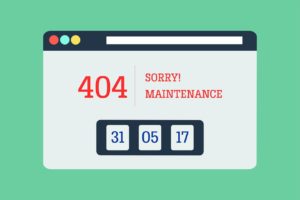Digital marketing today goes beyond investing the work in the actual SEO and marketing efforts. You need to ensure that your moving company software is bulletproof. And in order to ensure this, you have to make sure that your website is an impenetrable fortress against hackers and malware. How do you achieve that? We are glad that you asked because today we are looking at some simple solutions. The following measures serve to improve your website security and protect sensitive company data from the wrong hands. So, read carefully and start preparing.
9 simple ways to improve your website security
No matter what you might think, there is always some information on your website worth hacking or stealing. After all, we have come to a point in time where information has become currency. And because most of it is found online, website breaches and malware has become a normal occurrence. Hence, the need to improve your website security is all the more important today.

So, before you get into your moving business SEO efforts, why not put an extra protective layer on your website? And if you are at a loss for ideas of how to secure your website, here is our selection of 9 easy steps to that goal:
Step 1 – Keep software fresh & up-to-date
This is one of those self-explanatory notions – if you want the best protection, you need the best toys. Basically, as long as there are new threats and types of malware out there, you need to find new ways to protect your website from them. So, whether we focus on servers, domains or any specific types of software such as CMS… the notion of regular updates remains important. Why? Because any outdated piece of software leads to holes in your website security. Holes which someone will be more than eager to take advantage of.

The solution here – either take it upon yourself to manage your software and keep track of new updates or let professionals do it for you. A managed hosting solution is a recommended stress-free option. One that not only helps improve your website security but keeps it that way.
Step 2 – Watch out for SQL injection to improve your website security
What is an SQL injection? When someone uses a web form field or URL parameter to gain access to or manipulate your database, this is regarded as an SQL injection attack.
Why are they so dangerous? With a minor amount of rogue code, any standard Transact SQL can be corrupted. You can use the code to change tables, get information and delete data.
The good news is that you can easily prevent this from happening. All you have to do is always practice the use of parameterized queries, which are easy to implement in most web languages and codes.
Step 3 – Put up a line of defense against XSS attacks
This is a type of cyber attack that uses malicious JavaScript to corrupt your pages. It does this to gain access to browsers of your online visitors. Cross-site scripting (XSS) can change page content or steal sensitive information from users and forward it to the attacker. So, in order to improve your website security, make sure that users are unable to inject active JavaScript content into your pages.
Step 4 – Error messages are to be avoided at all costs
We already mentioned in the intro of this article that information is currency. So, the less information you offer users through error messages on your website, the better off you are. When errors do come to pass, make sure to keep users guessing. Provide them with the minimal of insights only and keep everything noted in your server logs.

Step 5 – Double-sided validation
Validation should always happen from both the browser and server aspect. To improve your website security, you have to cover all your bases:
- Browser validation offers protection from failure to fill out mandatory fields or the attempt to put text into a number field.
- Server validation serves as that deeper layer of protection. The membrane that keeps your website safe from the insertion of malicious or scripting code into your database.
Step 6 – Always make sure to check your passwords
The universal advice to use hard-to-crack password does not always yield obedience. This is probably why this is the most common reason for website hacks. To ensure the security and protection of your website, you need to keep your passwords unpredictable and changing. So, when you set up a website admin password, make sure that it is a strong and complex one. However, it is just as important to insist on your team members making the same effort when it comes to their personal accounts and access to company data and websites.
A minimum length of eight letters, an uppercase letter, and a number – all these basic steps can go a long way to improve your website security. And with the added step of making a password change every other month or so, you will be well-prepared.
Step 7 – Avoid file uploads to improve website security
It’s always a website security risk when you allow multiple people to upload files on the website. No matter how minor the upload, the file itself can easily contain a script that can corrupt and open your server to cyber attacks. So, how do you go about preventing this risk?

The best bet you have here is to do all you can to prevent or minimize file uploading access to users.
Step 8 – The implementation of HTTPS
In the past, we discussed the importance of switching to HTTPS protocol. The fact is that it guarantees a secure access for users, all the while protecting your website. If your website has sensitive and confidential data, HTTPS is the way to go to secure that information. And this is something that more and more online users are familiar with, thus expect to find in a website they visit.
Step 9 – Acquire website security tools
Now that you’ve gone through all the essential steps and implemented what you deemed important, time to test your website. This is where you need the final step – find some reliable website security tools and conduct penetration testing. The good news is that there are countless commercial and free or trial tools to help you in this task. The bad news is that there are so many of these tools that you will have to do your research on the best ones to use. Or keep following up on Movers Development and we might just cover this topic in the weeks to come.






